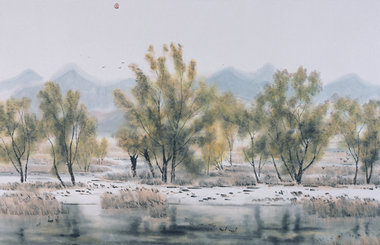 |
|
Taxidermist Jiang Muli and his disciple make animal specimens at the Northeast Normal University Natural History Museum. [Photo by Bai Shi for China Daily]
|
Taxidermist Jiang Muli's work does not involve high-end precision instruments but tweezers, knives and scissors, as well as a color palette and a pen. But it takes a steady pair of hands for this demanding job.
At the Northeast Normal University Natural History Museum, he does everything needed to preserve animal specimens - harvesting, peeling, bubbling, drying, grinding, filling, sewing and 10 other processes. Even the smallest specimen must have a sketch drawn on paper before it is preserved. This requires the taxidermist to be very familiar with each animal's body structure and its habits.
"Workers only use their hands, a craftsman needs both his hands and his brain, but an artist needs not only his hands and brain but his heart as well," he says. "Taxidermists must love animals and go out for field observations, photographing and recording things. They have to read a lot, so that a stuffed animal is preserved in line with its natural habits. It is only in this way that specimens can be made to look vivid. Years of observation, combined with your own understanding of the animal helps you integrate tangible thoughts into the preserved animal. In other words, it is best if you can achieve unity of the inner state of a human and an animal, not only restore the appearance of the animal."
In recent years, Jiang and a few disciples have preserved more than 100 specimens including a Siberian tiger, a snub-nosed monkey and red-crowned cranes. Nowadays, with the growing range of human activities, there is an accelerated destruction of wildlife. So, preserving specimens of endangered animals provides an avenue for in-depth research and has become one of the ways of protecting wildlife.


























 Raymond Zhou:
Raymond Zhou: Pauline D Loh:
Pauline D Loh: Hot Pot
Hot Pot Eco China
Eco China China Dream
China Dream China Face
China Face






